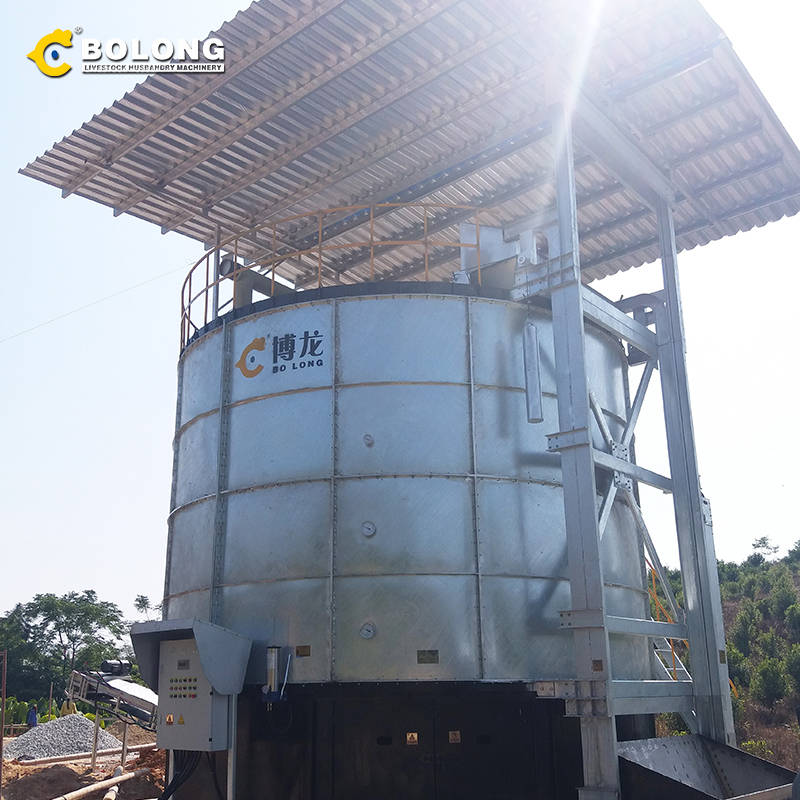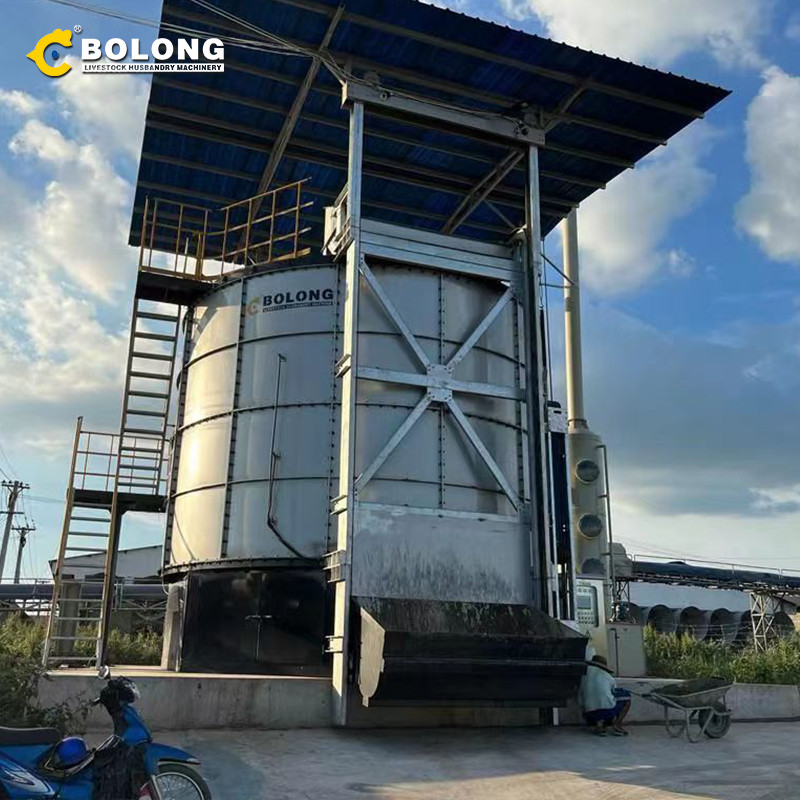In the field of modern agricultural waste treatment and organic fertilizer production, organic fertilizer composting machines are of vital importance. Its appearance design and space utilization have a profound impact on user selection and site layout, and are related to user experience and production efficiency.
At present, simplicity and practicality have become the mainstream aesthetic principles of composting machine appearance design. Abandoning complicated decorations and using simple and smooth lines to outline the tank body not only makes the composting machine visually refreshing, but more importantly, this design is easy to clean and maintain. For example, some composting machines are cylindrical as a whole, with a smooth surface and no excessive protrusions or depressions, which reduces the attachment points of dirt and impurities and greatly reduces the difficulty of daily cleaning.
As the concept of environmental protection has become more and more popular, composting machines have also paid more and more attention to integration with the surrounding environment in terms of appearance style. In agricultural parks, composting machines often use colors similar to the natural environment, such as green and brown, so that they do not appear abrupt. Some companies will also draw patterns related to agriculture and ecology on the surface of the tank, which not only beautifies the equipment but also conveys the company’s environmental protection concept. For example, drawing the crop growth process or ecological cycle pattern on the tank enhances the visual appeal and cultural connotation.

The choice of appearance material directly affects the performance of the composting machine. The use of corrosion-resistant stainless steel as the tank shell can not only ensure that the composting machine will not be corroded in the harsh environment of long-term contact with organic waste, extend the service life, but also ensure the stability of the fermentation process. Because corrosion may cause the tank to leak and affect the fermentation effect, high-quality stainless steel effectively avoids this problem.
The appearance structure design is also closely related to maintenance work. The modular appearance design makes each component easy to disassemble and install. When a component fails, maintenance personnel can quickly replace the damaged module, greatly shortening the maintenance time. For example, some composting machines design motors, transmission devices, etc. as independent modules, which are installed in easy-to-operate locations to facilitate daily inspection and maintenance and improve the availability of the equipment.

Although traditional cylindrical composting machines are common, special-shaped tank designs can be used to optimize space utilization in some places with limited space. For example, the design of the long axis and short axis of the ellipsoidal composting machine can be adjusted according to the shape of the site, which can better fit the corners or irregular spaces and improve the utilization rate of the site space.
For sites with sufficient space height, multi-layer layout composting machines are an excellent choice. By setting the fermentation area in layers, the processing capacity of the composting machine is greatly increased without increasing the floor space. Each layer can perform fermentation operations independently, and is connected to the control system through reasonable pipelines to achieve efficient automated production.

When choosing an organic fertilizer composting machine, users should comprehensively consider the appearance design and space utilization factors. Give priority to appearance designs that conform to aesthetic principles, have excellent materials, and are easy to maintain. At the same time, according to the actual situation of your own site, select the type of composting machine that can optimize space utilization to the greatest extent. In this way, we can ensure that the composting machine can better integrate into the production environment while meeting production needs, creating greater value for the enterprise.